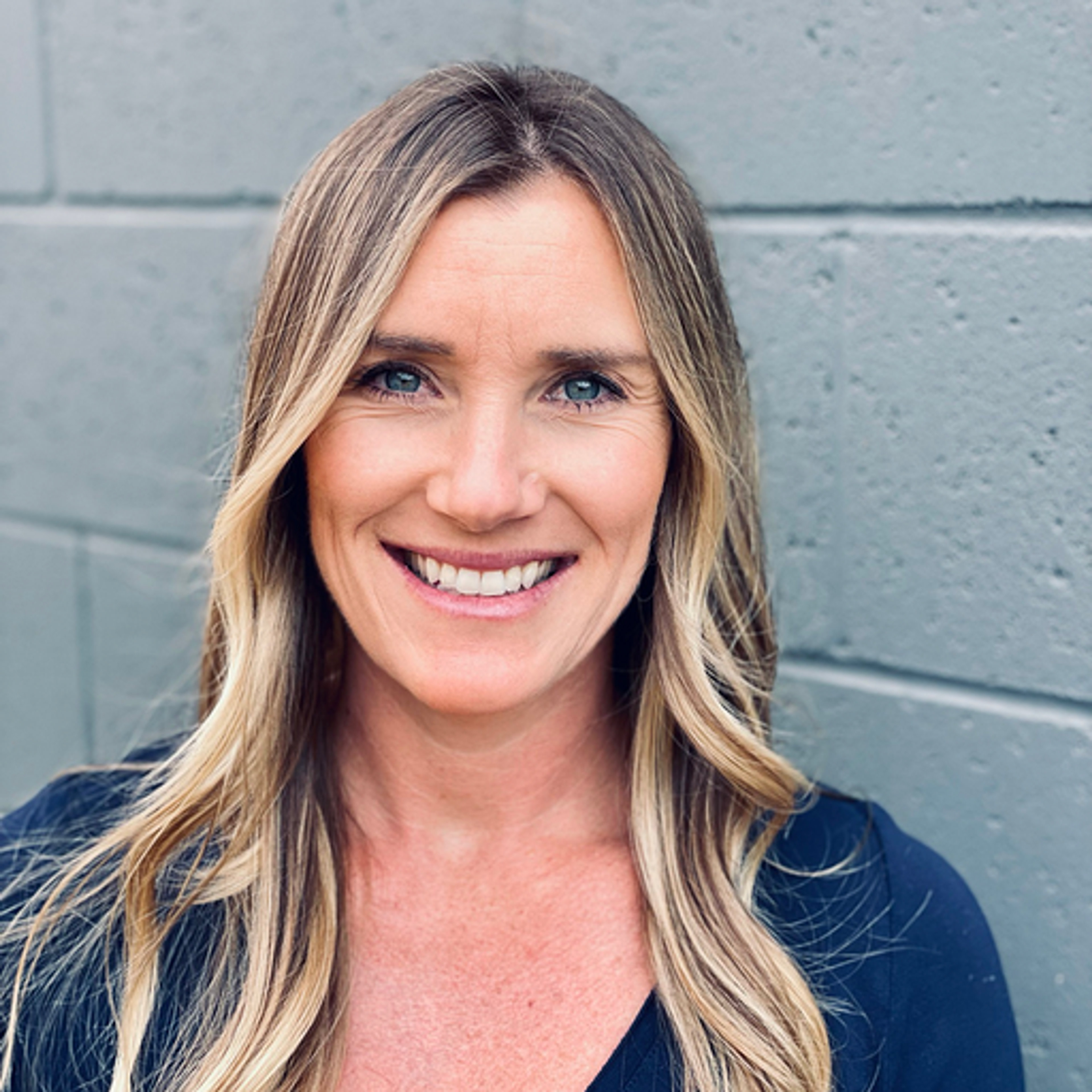


Believe it or not, eating the food isn’t always the scariest part of meals in recovery. In fact, for anyone struggling with their relationship to food (whether it’s disordered eating or an eating disorder), the time after the meal can often be even more fraught than the meal itself, bringing difficult emotions and physical discomfort. Those minutes to hours after your last bite may include a storm of difficult thoughts, emotions, and urges that can feel crippling and insurmountable. Read on to learn more about post-meal distress, why it occurs, and how to move through mealtime aftermath in healthy and supportive ways.
Why post-meal distress is a normal part of recovery
While there are many eating disorder recovery challenges, post-meal distress is one of the most common experiences across diagnoses—and a necessary and natural part of the healing process. “Since eating disorders are characterized by a difficulty with food, it’s very normal to experience distress after eating because of having to do something that has been a significant struggle,” says psychotherapist Amanda Marks, LPC, CPCS.
In these moments after meals, it’s as if the disordered part of the brain is trying to do damage control, because eating anything—and especially a full meal—is its biggest threat and worst-case scenario. This means that the period post-mealtime can, understandably, feel unsafe. “Eating disorders are ultimately coping skills for many, and losing that coping skill can cause distress until other, safer coping skills are developed and used regularly,” Marks explains. Though enduring post-meal distress can be challenging, it’s worth it, because it ultimately leads to a safer, more positive relationship with food and increased resilience in recovery. Thankfully, there are supportive, healthy ways to navigate this challenge, which we’ll explore in more detail below.

The physical reasons for post-meal distress
While we often think about the emotional component of post-meal distress, it can also include a myriad of physical symptoms, from what some people refer to as the “recovery bloat” to quality-of-life disruptors like constipation.
Bloating, stomach pain, and delayed digestion
Since the gastrointestinal (GI) tract slows during periods of malnutrition and restriction, it needs time to recalibrate during the nourishment process, which can mean uncomfortable side effects like delayed digestion. GI pain or discomfort often follow meals in recovery, with post-meal fullness and abdominal distension the most typical GI complaints from people with eating disorders, along with bloating. One 2021 systematic review shows that GI disorders like functional dyspepsia (chronic indigestion that comes with bloating and stomachaches after meals) are significantly high in eating disorder patients, and often linked to psychological, hormonal, and functional factors.
Early satiety and unreliable fullness cues
According to eating disorder dietitian Libby Parker, RD, anyone who has been restricting may experience stomach stretching once they begin eating regular meals or eating more than their typical intake. This is because their body has adjusted to different intake patterns and fullness cues. As Parker explains, “this stretching, which is a normal response to food and fluid intake, sends a signal to the brain that the person is getting full and to stop eating, and when this happens early in the meal, it can make it physically difficult to eat enough.”
She says such physical issues can cause the eating disorder voice to pipe up, saying things like, “you're supposed to honor your hunger and fullness cues, and you’re full.” This can be particularly confusing, because while this might sound valid, people in early eating disorder recovery often can’t trust their hunger and fullness cues and need to actively override them. Parker adds that those with binge eating disorder may have different types of physical distress, like delayed fullness if eating too quickly.
Constipation, diarrhea, and vomiting
Constipation is also common after meals (and in general) during eating disorder recovery (especially in anorexia). This is usually a result of slowed gastric motility—which is caused by malnutrition and dehydration—leading to food backing up in the colon. The same 2021 review from above also shows that irritable bowel syndrome, which often includes constipation or diarrhea, is common in those with eating disorders. It’s likely that such symptoms are caused by malnutrition, prolonged restriction, purging, and other disordered eating behaviors, and exacerbated by mental distress and hard feelings like overwhelm and anxiety (since the brain and gut are interconnected). Those with bulimia may also experience spontaneous vomiting.
Nausea, heartburn, and reflux
Unfortunately, other GI symptoms like heartburn and reflux can occur after meals in eating disorder recovery following long periods of restriction and malnutrition (and binge eating behaviors can directly cause heartburn and regurgitation, since it negatively impacts the esophagus). Nausea is another common post-meal issue, often caused by delayed gastric emptying and anxiety—and the nausea often leads to even more anxiety, which then worsens the nausea. “These physical discomforts can exacerbate emotional distress, and may contribute to a cycle of negative thoughts and behaviors surrounding food and eating,” explains eating disorder dietitian Jaclyn Leocata, RDN.
In my practice, I also see clients who experience other post-meal visceral responses—typically triggered by their nervous systems sensing a perceived threat—such as rapid heart rate, sweating, clamminess, and disassociation. The good news? Research shows that with time, nutrition rehabilitation, and progress in eating disorder recovery, the physical symptoms that come alongside post-meal distress will resolve.
The psychological and emotional storm after a meal
It’s also normal to experience emotional and mental distress following meals (and these feelings are typically intertwined with the physical symptoms). Here are some of the most common factors that fuel these challenging emotions:
The eating disorder voice
Often, there are challenging eating disorder thoughts after meals, with the eating disorder voice telling a story about why eating that meal was the worst thing possible. Those thoughts typically lead to highly uncomfortable emotions, including guilt, anger, fear, and shame about the quantity or types of foods eaten, and feeling a loss of control and safety. “While the specific experiences may vary, the emotional impact can be quite similar across different eating disorder diagnoses,” Leocata says. “For instance, those with anorexia nervosa may struggle with an intense fear of weight gain after eating, whereas people with bulimia nervosa may feel a strong urge to engage in compensatory behaviors like purging, excessive exercise, or future restriction.”
Marks says the eating disorder will often “‘tell’ someone that they are a failure or a bad person for eating and not having enough “willpower.” This is because the illness is threatened when rigid food rules and rituals are broken, and so it lashes out as an act of self-protection.
Emotional overwhelm
There’s a saying in eating disorder recovery, “when food goes down, emotions come up,” which refers to the fact that once you’re eating food in recovery, you’re bound to feel emotions that have been numbed for significant periods of time. Eating disorders and disordered eating often have emotional purposes and function as maladaptive coping tools—so, if someone is using their eating disorder to suppress feelings of sadness by restricting food intake, for example, eating an adequate meal is going to feel exceptionally difficult. “When our bodies are nourished, we experience more feelings and sensations, and that can be incredibly overwhelming and distressing for someone who is used to feeling numb,” Marks explains.
Often, those in recovery haven’t yet developed healthy ways of coping with sadness or other tough emotions, and so I describe this phenomenon as being thrown out to sea without a life raft to hold onto. “Emotionally, eating disorders use a fixation on food as a coping mechanism,” Parker says, “and so anything that causes discomfort, whether physical, or against the eating disorder, will create a heightened emotional reaction.” This can look like crying after meals, or feeling depressed or irritable after eating.
Body image distortion and feeling “disgusting”
Eating regular meals and snacks can also have a negative impact on body image, at least at first. As Leocata explains, this is because after eating, someone with an eating disorder may be filled with negative emotions, which can lead them to “perceive their body negatively, leading to feelings of disgust and self-hatred. They might catastrophize the consequences of eating or have irrational beliefs about food and its effects on their body.”
Additionally, when someone’s trauma is at the root of their eating disorder (which is common), old wounds can become entangled with the eating disorder. This makes it particularly hard to feel safe within the body after meals, since the body may perceive eating as a serious threat. When your body doesn’t feel like a safe place to be, you’re more likely to have a fraught relationship to what it looks like.
Navigating meals: practical guidance for what to eat
Since every person has unique energy and nutrient needs, it’s best to work with a registered dietitian in eating disorder recovery to develop a meal plan and find the eating pattern that works best for you. However, there are some general guidelines to keep in mind when it comes to learning how to eat normally after an eating disorder.
The role of mechanical eating
Often, mechanical eating, or eating meals and snacks by the clock at regular intervals, is a helpful but temporary tool used in the beginning of recovery until hunger and fullness cues are back online and the eating disorder voice is quieter. Mechanical eating can help connect the mind back to the body, provide external guidance when internal guidance is buried, disrupt the eating disorder brain, and support weight restoration.
From "safe foods" to food neutrality
At first, meals and snacks may need to be comprised entirely of foods the eating disorder finds safe or non-threatening. This is okay at first, but over time, it’s critical to increase variety and integrate “fear foods” on a regular basis. This not only helps you eat a variety of foods to help your body get all the nutrients it needs, it also helps you reach food freedom and neutrality, rather than a black-and-white view of “good” or “bad” foods (a mentality that fuels the eating disorder’s rigid rules).
Principles of a balanced recovery meal
Again, you should work with an eating disorder-informed dietitian to determine what, exactly, meals and snacks look like for you, but here are a few rules of thumb to keep in mind as you create eating disorder recovery meals:
- Include sources of all three macronutrients (carbohydrates, fat, and protein( at each meal and snack.
- Include a source of dairy (or a dairy alternative) at most, if not all, meals.
- Include a mix of nutrient-dense foods (like avocado and broccoli), and “fun foods” like French fries, pizza, or sweets (as you’re able).
How to cope: your post-meal distress toolkit
Having challenging moments after eating is an inevitable part of eating disorder recovery, but there are things you can do to make those minutes or hours more manageable, whether it’s for yourself or a loved one. Below are several expert-endorsed eating disorder coping skills that can help you navigate post-meal distress during recovery.
In-the-moment coping skills (for immediate relief)
The strategies below can be helpful earlier in your recovery, when meals still cause a great deal of distress. You can turn to them as needed when difficult feelings arise after eating.
- Try mindfulness practices. To develop a more mindful approach to your hard thoughts and feelings after meals, be intentional about choosing a specific practice to support the process. Leocata suggests guided meditations (here’s an example of one you can try when flooded with eating disorder thoughts after meals). Many of my clients like to pick a sense (sight, sound, taste, smell, or touch), and engage with it, to help them get more present in the moment and less fused with their thoughts. Sensory tools like essential oils, weighted items, massage, and rocking chairs can be helpful for connecting with your body’s senses.
- Work with your nervous system. Since the time after a meal can feel emotionally unsafe in recovery, it can be helpful to create a safer internal environment by regulating your nervous system. Regulating practices include sensory modulation (as mentioned above), using cold water or an ice pack on your face or hands, being with a person who feels safe to you, petting your dog or cat, spending time outside or in nature, and taking several rounds of extended exhale breaths. Parker adds that deep diaphragmatic breathing, which activates the parasympathetic (or rest-and-digest) nervous system, can help calm anxiety.
- Choose another post-meal activity. Planning an activity for after meals can be helpful: crafting, journaling, listening to music, spending time with a friend—anything that will help take your mind off the meal or snack for a while. Staying occupied and supported after meals can help soften hard thoughts and emotions and prevent compensatory behaviors. It’s important to note that while distracting activities can serve a purpose, it’s best if they aren’t only tool you’re choosing. “Distraction techniques like watching TV should be used minimally, since that can often lead to avoidance,” Marks cautions.
- Process feelings after the meal. Whether alone or with a support person, identifying and safely expressing your feelings can provide some relief after meals. Depending on what you’re feeling, safe emotional expression can include talking about it, drawing or painting, journaling, crying, yelling into or punching a pillow, or whatever helps you healthfully express yourself. “It can be helpful to name the discomfort and include it in a recovery affirmation such as, ‘This is difficult and I'm choosing recovery,’” Marks says.
Foundational strategies (for long-term healing)
The strategies below are more long-term, gradual tools to help reduce post-meal distress over time and help you or your loved one develop a less fraught relationship with eating.
- Eat slowly and limit fluids. During the meal, Parker suggests eating relatively slowly and avoiding drinking excessive fluids. This will minimize physical distress and promote an easier post-meal period.
- Work with a therapist to learn healthy emotional coping skills. One of the hardest parts of recovery can be learning how to feel the full spectrum of human emotions, after months or years of numbing them through behaviors like restriction. However, it’s critical to learn how to navigate all emotions, including the hard ones that can surface after meals, and to replace unhealthy eating disorder coping skills and recovery ambivalence with life-supportive ones.
- Be kind to yourself. There are three steps to applying self-compassion to your experience, according to researcher Kristin Neff. First, extend kindness to yourself instead of judgment; my clients tend to find it helpful to imagine they’re speaking to a loved one who is struggling. You can also show yourself kindness through action, like giving yourself a hug or wrapping yourself up in a blanket with a warm cup of tea. Second, tap into common humanity: remember that you’re not alone and that other people are having difficult emotions after meals, too. Here are some coping cards to help you integrate self-compassion into your post-mealtimes. Lastly, remember that you’re not your thoughts or emotions. Try to be mindful of them instead of over-identifying with them, even though they can feel all-consuming.
Every meal is a step forward
Resolving post-meal distress (and other facets of recovery) requires healing the body and mind together, with the support of professionals. By taking it one meal at a time, and using your tools intentionally and consistently, your brain will build new, supportive neural pathways in place of the destructive ones put in place by an eating disorder. It can be difficult to navigate recovery and struggles surrounding mealtimes, but with support and determination, you’ll one day find that you or your loved one can eat a meal and simply move on with the day, feeling satisfied, comfortable, and renewed.
FAQ
Why do I get stomach pain and bloating in eating disorder recovery?
Since the GI tract slows during periods of malnutrition and restriction, it needs time to recalibrate during the nourishment process, often causing uncomfortable side effects, including stomach pain and bloating. Keep in mind that stomach pain and bloating (along with other GI struggles) are common across eating disorder diagnoses, and go away over time.
Is it normal to cry or feel depressed after eating?
In eating disorder recovery, it’s normal to cry or feel depressed after eating a meal or snack. This is for several reasons, including psychological to physical discomfort. Eating disorders function as maladaptive coping mechanisms to numb hard feelings, so it makes sense for hard feelings to surface once you’re in recovery and eating regularly. There’s also the common storm of eating disorder thoughts that cause guilt and shame and can feel extremely overwhelming and all-consuming. Finally, there’s the physical distress that can come after meals in recovery, which can cause emotions to feel even harder to navigate.
What should I do if I feel the urge to use behaviors after a meal?
It’s normal to feel the urge to use behaviors after a meal. Try to first change your location (e.g. go outside or change rooms) and set a timer on your phone for five minutes, to give yourself a timeframe to choose your way of coping. Then, choose a coping skill or two (like expressing what you’re feeling safely through whatever feels right, like crying or journaling, using healthy distraction, or regulating your nervous system by taking some extended exhale breaths). It’s also often helpful to reach out to at least one person in your support system, like your dietitian or therapist, or a trusted friend. Finally, try planning ahead before meals, so you know how to handle urges that may arise afterwards.
How can I learn to eat normally again?
Eating disorder recovery is a gradual, non-linear process, which requires resilience and patience with yourself. With repetition of eating regular meals and snacks and using your copping tools, your brain and body will learn that it’s safe now to nourish yourself and even enjoy food. Go one meal and snack at a time and if you’re not already, seek support from a dietitian and therapist. Your dietitian will help you understand your nutrition needs, integrate or re-integrate foods you love into your diet, manage GI issues, and trust your body over time, and your therapist will help you develop critical recovery skills like emotional resilience and self-compassion. They both will help remove barriers to eating normally and provide non-judgmental support on your recovery path.
- Hedr, T. (2022). The Overlap Between Eating Disorders and Gastrointestinal Disorders. https://med.virginia.edu/ginutrition/wp-content/uploads/sites/199/2022/08/August-2022-Eating-Disorders-and-GI-Disorders.pdf
- Hanel, V., Schalla, M. A., & Stengel, A. (2021). Irritable bowel syndrome and functional dyspepsia in patients with eating disorders ‐ a systematic review. European Eating Disorders Review. https://doi.org/10.1002/erv.2847
- Stanculete, M. F., Chiarioni, G., Dumitrascu, D. L., Dumitrascu, D. I., & Popa, S.-L. (2021). Disorders of the brain-gut interaction and eating disorders. World Journal of Gastroenterology, 27(24), 3668–3681. https://doi.org/10.3748/wjg.v27.i24.3668
- (2024, March 5). Eating Disorders and IBS - Are They Connected? - National Alliance for Eating Disorders. National Alliance for Eating Disorders. https://www.allianceforeatingdisorders.com/can-eating-disorders-cause-ibs/
- Riedlinger, C., Mazurak, N., Schäffeler, N., Stengel, A., Giel, K. E., Zipfel, S., Enck, P., & Mack, I. (2022). Gastrointestinal complaints in patients with anorexia nervosa in the timecourse of inpatient treatment. Frontiers in Psychiatry, 13. https://doi.org/10.3389/fpsyt.2022.962837
- Cleveland Clinic. (2022, January 10). Functional Dyspepsia: Symptoms, Diet, Treatment & Living With. Cleveland Clinic. https://my.clevelandclinic.org/health/diseases/22248-functional-dyspepsia
- Brown, A., Tse, T., & Fortune, T. (2018). Defining sensory modulation: A review of the concept and a contemporary definition for application by occupational therapists. Scandinavian Journal of Occupational Therapy, 26(7), 515–523. https://doi.org/10.1080/11038128.2018.1509370
- Monaghan, M., & Doyle, L. (2022). “It stopped you thinking about food” – The experiences of mealtimes and attending a post‐meal support group for young people with anorexia nervosa. International Journal of Mental Health Nursing, 32(1). https://doi.org/10.1111/inm.13068







